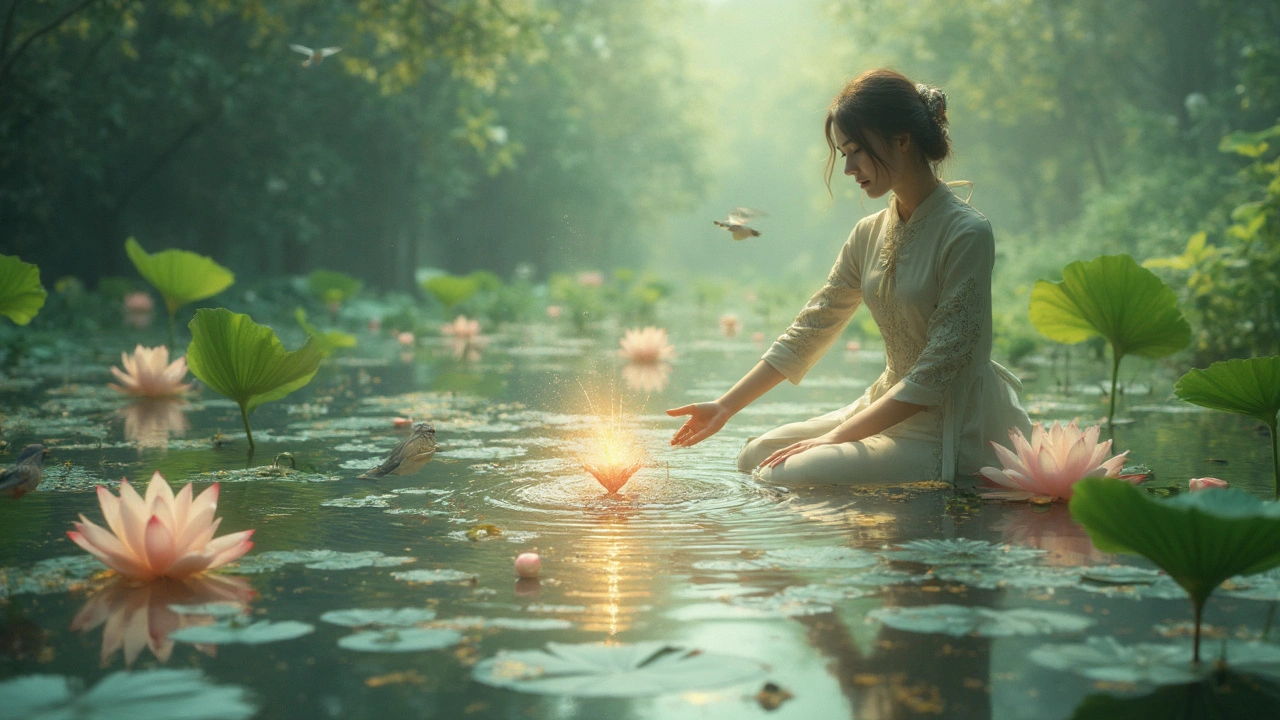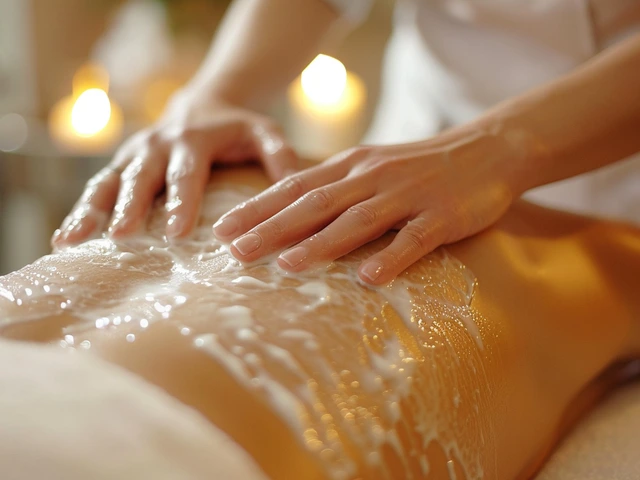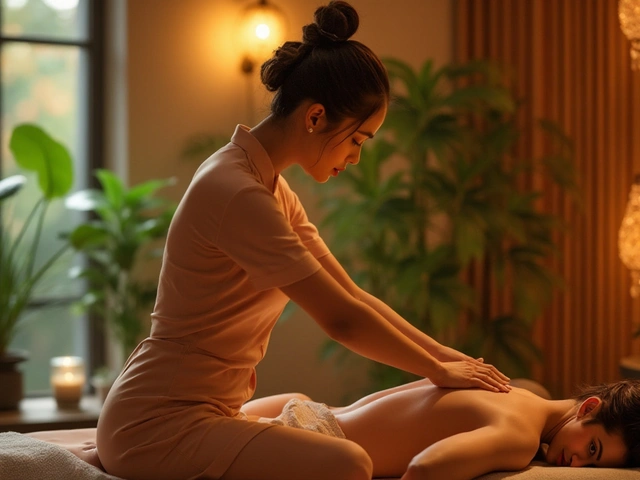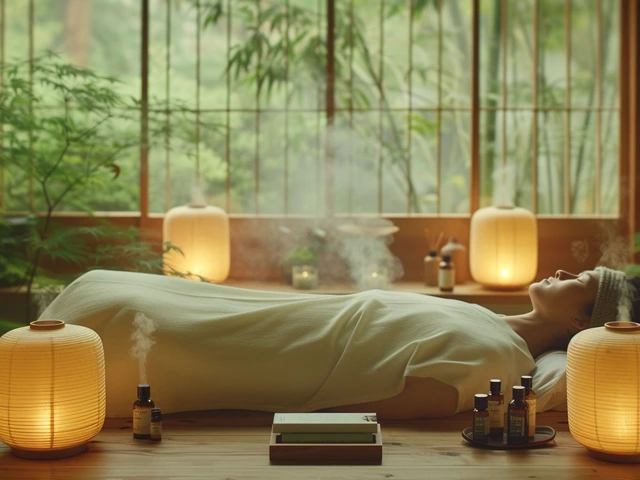Ever feel like your body is out of sync, like it's carrying some kind of invisible baggage? That's where Reiki massage might step in to save the day.
Reiki, a gentle yet powerful practice, uses energy healing techniques that originated in Japan. It’s all about balancing the energies in your body to promote relaxation and speed up natural healing processes.
What makes Reiki fascinating is that it doesn't rely on physical manipulation. Instead, practitioners channel universal energy through their hands, helping melt away stress and negativity. Some even say it feels like a wonderful warm glow coursing through their body.
People often turn to Reiki not just for physical ailments like chronic pain but also to ease anxiety, depression, and emotional stress. If you're looking for a natural way to enhance well-being, maybe it's time to consider giving Reiki a shot.
But how exactly does a Reiki session work, and what should you know before diving into it? Stay tuned as we unwrap this ancient yet surprisingly relevant technique in the modern wellness scene.
- What is Reiki Massage?
- History and Origins
- Benefits of Reiki
- How a Reiki Session Works
- Tips for Maximizing Reiki Experience
What is Reiki Massage?
Ever wondered how a simple touch could promote healing and relaxation? Welcome to the world of Reiki massage, a form of energy healing that’s been making waves for its ability to help restore balance in the body. Originating from Japan in the early 20th century, Reiki is all about tapping into universal life force energy. The belief is that we're all guided by the same flow of energy, and disruptions in this flow can lead to discomfort or illness.
Unlike traditional massages, which involve kneading your muscles, Reiki massage is typically hands-off. Practitioners channel energy from the universe through their palms to the patient, aiming to align and balance their chakras, or energy centers. Sounds spiritual, right? But plenty of folks report feeling deep relaxation and emotional clarity after a session.
How does it work?
It might seem mysterious, but the process is pretty straightforward. During a session, you usually lie down—fully clothed, by the way—while the Reiki practitioner places their hands lightly over or slightly above your body. They start at your head and move down towards your feet, spending extra time on areas that might need more attention.
- Relaxation: One of the main goals is to help you feel deeply relaxed, easing tension that might be stuck in your mind or body.
- Energy Flow: By activating the natural healing process, Reiki aims to clear energy blockages, making way for a smoother energy flow through your body.
- Emotional Balance: Many people say that Reiki helps them better deal with anxiety and stress, promoting a stronger sense of emotional well-being.
Although scientific evidence is still catching up, a study published in the Journal of Holistic Nursing found that Reiki massage sessions might significantly reduce stress levels. Not bad for something that feels like a warm, gentle wave washing over you without having to lift a finger!
So if you’re looking to add a little balance to your busy life, Reiki might just be the ticket.
History and Origins
Reiki massage has a pretty fascinating backstory that dates back to the early 20th century. It was developed by a Japanese monk named Mikao Usui in 1922. Usui was determined to find a method of healing that didn’t involve any mystical secrets hidden in ancient texts. He wanted something everyone could use.
So, where did Usui find this energy healing concept? After some thorough soul-searching and a profound experience during a meditation retreat on Mount Kurama (a place known for spiritual enlightenment), Usui sorted out the basic principles of what we know today as Reiki. Pretty cool, right?
Spread Across the World
Once Usui established Reiki, he didn't keep it to himself. He started teaching others in Japan. One of the key figures in spreading Reiki beyond Japan was a woman named Hawayo Takata. Born in Hawaii, she traveled to Japan for medical treatment and came across Reiki. Impressed with the results, she studied under one of Usui's close associates, Chujiro Hayashi.
Takata brought Reiki back to the United States and diligently set about spreading this new method of healing. Through her, Reiki reached the shores of America and Europe during the mid-20th century. Her techniques and teachings formed the cornerstone of what many Western practitioners follow today.
Thoughtful Evolution
As Reiki grew, practitioners began adapting techniques to suit different cultures and healing styles. While the original method stays true to Usui's teachings, many variations have surfaced. Despite these tweaks, Reiki’s core goal remains unchanged: balance and healing through energy.
| Time Period | Event |
|---|---|
| 1922 | Mikao Usui establishes Reiki in Japan. |
| 1930s | Hawayo Takata brings Reiki to Hawaii and North America. |
| Mid-20th century | Reiki gains popularity in the United States and Europe. |
| Today | Reiki is a widely practiced form of energy therapy across the globe. |
Reiki is not just an ancient relic but a continuously evolving practice. It's a beautiful blend of tradition and modern adaptation, reflecting its deep roots yet broad appeal in today’s healing practices.

Benefits of Reiki
Reiki massage might just be what the doctor ordered when life throws stress balls your way. Wondering what makes this ancient method a go-to for many? Here's a no-nonsense breakdown of its benefits.
Relaxation and Stress Reduction
Ever notice how your body tenses up after a long day? Reiki massage acts as a reset button, softening those tight muscles and calming your mind. It’s like having your personal Zen retreat, but way faster.
Enhancing Quality of Sleep
Had enough of tossing and turning at night? Regular Reiki sessions reportedly improve sleep by creating a deep sense of relaxation. Who wouldn’t want to wake up refreshed and recharged?
Natural Pain Relief
While it’s not a substitute for medical treatment, many folks use Reiki to complement their pain management routine. Chronic headaches or muscle pain? Reiki could help by calming your nervous system.
Boosting Emotional Well-being
Emotional roller coasters can be exhausting. Reiki therapy gently guides energy to where it’s needed most, helping ease anxiety, depression, and emotional blocks.
Supporting the Body's Natural Healing
Reiki may not be magic, but it sure acts like it. By harmonizing your body's energy, it might boost the immune system, encouraging your body to heal itself naturally.
Feeling curious about how Reiki massage could fit into your life? Try it out and see if this ancient wisdom could become a modern wellness staple for you.
How a Reiki Session Works
So, you're curious about what actually happens during a Reiki massage session? It's a pretty simple and relaxing process.
The Setup
When you walk into a Reiki session, expect a calm atmosphere. The therapist might have soothing music playing. You'll be invited to lie down on a massage table, fully clothed and with a blanket for comfort if you'd like.
The Process
The Reiki practitioner starts by placing their hands lightly on or near your body. This is where the magic of energy therapy begins. The practitioner becomes a conduit for universal energy, channeling it through their hands to areas of your body where it's needed most.
You'll usually start feeling warm sensations, relaxation, and in some cases, people report tingling. These feelings are a sign that the energy is working through you.
Session Duration
Most sessions last between 60 to 90 minutes. During this time, the practitioner may focus on different parts of your body.
After the Session
After the session, you might feel light, refreshed, and relaxed. Some people even notice an immediate decrease in pain or stress.
However, the benefits might not always be immediate. Sometimes it takes a couple of sessions to really notice the impact.
If you're wondering how often you should get Reiki, it varies by individual needs. Some people find a single session rejuvenating, while others schedule regular appointments to maintain balance and well-being.
Reiki is all about helping you achieve balance and relaxation. Whether you're dealing with stress or trying to improve your overall health, it's a gentle way to give your body a little love and attention.

Tips for Maximizing Reiki Experience
So you're ready to embrace the healing vibes of Reiki massage. Great choice! Here are some tips to make the most out of your sessions.
1. Set a Clear Intention
Before your session begins, think about what you want to achieve. Is it relaxation, stress relief, or something else? Having a clear intention can help direct the energy flow more effectively.
2. Create the Right Environment
While the practitioner will create a calming setting, you can do your part by arriving in a relaxed state of mind. Consider wearing comfortable clothes, and avoid rushing to the appointment. Trust me, it makes a difference.
3. Stay Open-Minded
Reiki might feel different from other massage therapies because it focuses on energy rather than physical manipulation. Go with the flow and keep an open mind. Sometimes the benefits are subtle but profound.
4. Communicate with Your Practitioner
Your Reiki therapist is your guide. Feel free to ask questions before and after the session. It’s important to share any physical or emotional issues you want to address.
5. Consistency is Key
Like any other healing practice, regular Reiki sessions can lead to better, more lasting results. Consider making it a habit, like yoga or meditation, in your wellness routine.
6. Reflect Post-Session
After your Reiki session, take a moment to reflect on your experience. Jot down any thoughts or feelings that arise. It's a great way to tune into your body and mind.
Remember, Reiki massage is about personal well-being and balance. It's meant for everyone to experience in their own way. By incorporating these tips, you'll be well on your way to embracing the benefits Reiki can offer.



